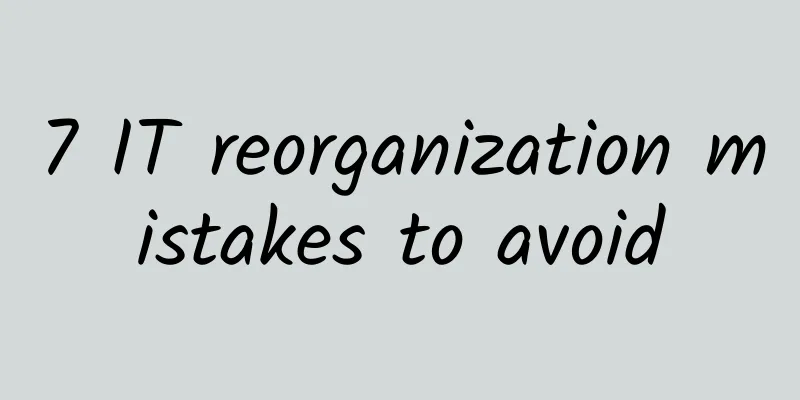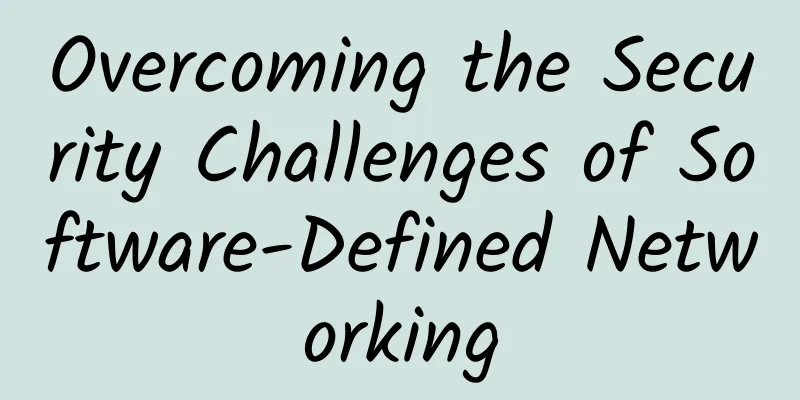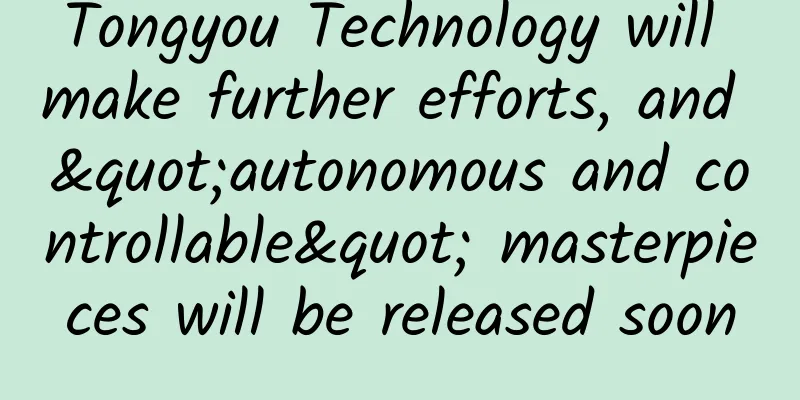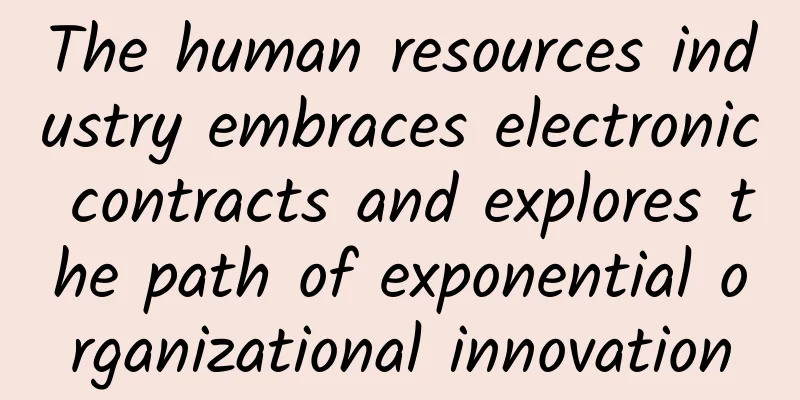7 IT reorganization mistakes to avoid

|
The way IT operates is changing constantly and rapidly. As more technology departments begin to lead digital transformation initiatives, finding the right new way for IT to work will be a core issue, although it is also often overlooked. This force, combined with traditional drivers such as mergers and acquisitions and cost-cutting, has led many CIOs to restructure their teams so they can simultaneously support broader enterprise-wide restructuring.
The 2019 CEO and Senior Business Executive Survey by research and advisory firm Gartner found that corporate structural development ranked third on the list of top priorities for the 473 leaders surveyed, behind growth and technology. Meanwhile, the Conference Board, in its annual survey of CEOs and executives, found that new business models created as a result of disruptive technologies were the second-highest internal priority for 2020 among the 1,500 or so leaders it surveyed, closely followed by attracting and retaining top talent. Experts anticipate that, as a result of these priorities, many CIOs will be tasked with restructuring-related tasks in the near future. Given how challenging reorganizations can be, CIOs would be well advised to avoid these common mistakes leaders make when undertaking reorganizations. Underestimating the change management required Like most executives, CIOs typically focus on hard facts when developing strategy and deciding which projects to tackle. As a result, they may focus more on the benefits that a restructuring strategy will provide (e.g., the ability to deliver solutions and services faster) and how they will reshape the org chart. Less obvious aspects of organizational change—such as how people will react—are often an afterthought. “Understanding the implications and the change management required is often overlooked because CIOs typically see the technical and financial advantages. But they should also recognize the cultural barriers,” said Doug Robinson, executive director of the National Association of State Chief Information Officers (NASCIO). CIOs who adopt traditional change management strategies to adapt to large-scale restructuring initiatives will be more likely to succeed in gaining needed buy-in from other executives and managers and getting rank-and-file employees to work in new ways, Robinson said. Rather than assuming that their colleagues and employees knew the reasons for the reorganization, these CIOs effectively communicated their vision by tailoring their messaging to various stakeholders and educating employees about the benefits they and the company would enjoy from the transformation, Robinson said. This strategy isn’t new, but it will become more important as digital transformation requires CIOs to reshape IT in ways that create new business opportunities, Robinson said. In NASCIO’s 2018 National CIO Survey, CIOs ranked communication and relationship management as the top two leadership traits needed for success, while being a change manager ranked sixth, ahead of negotiator, facilitator and even technical expert. Aiming at the wrong target Bill Briggs, CTO of Deloitte Consulting, has worked with CIOs as they move their organizations from traditional waterfall project delivery to more agile methodologies, such as DevOps, in order to better respond to market changes and organizational needs. But he said some CIOs are focusing on how to successfully transform and successfully implement new delivery methods, rather than focusing on getting the expected results that the transformation is meant to deliver. Briggs said he understands why and how this happened. “These initiatives are concrete,” he said, adding that CIOs and their teams can be too focused on tactical changes to fully realize the end goals they’re supposed to be achieving. “A lot of times when CIOs think about change, they think change equals agile or DevOps, so they break down the organizational structure and make it about products or groups organized around functionality, but that’s not the point. That’s not the full story because the goal can’t just be to move to DevOps,” Briggs said. Instead, CIOs must determine what they need from other executives and departments to deliver on the promise of these changes, such as moving to agile methodologies themselves. "Some of the change has to come through people in the business, and that's a much bigger change. It's not just about making people aware [of the changes happening in IT); CIOs have to break down the boundaries between business and IT," Briggs explained. To help achieve the right goals, Yan Huang, assistant professor of business technology at Carnegie Mellon University's Tepper School of Business, also advises CIOs to focus on stakeholders. “When CIOs are designing a new structure, they should put the values and needs of stakeholders first, (recognizing that) stakeholders can be customers, partners, leadership, depending on what is driving the need for restructuring,” Huang said. She gave the example of a bank that moved from using paper forms to leveraging tablets as part of a broader shift toward customer-centricity. The CIO there worked with business leaders to articulate what value the bank wanted to deliver to customers (a key stakeholder in the restructuring) to help ensure the organization achieved those goals, rather than just targeting the technology needed to successfully deliver them. Too narrow or short-sighted Changes to one department rarely affect just that one group, but executives, including CIOs, often overlook where and how the ripple effects of a reorganization will play out. Therefore, a holistic approach is necessary that anticipates how updates to tools in IT or any other area will impact workers, departments, and technology needs across the enterprise. “So even if the restructuring happens in one specific business process, CIOs should consider the impact of that change on the entire ecosystem,” Huang said. For example, she said, CIOs should consider how the change might affect the compatibility of processes with areas that the plan leaves unchanged, and whether the change will open gaps in efficiency or security that also need to be addressed. Huang also advises executives to think beyond immediate restructuring requirements and prepare for the long haul. This is challenging given the amount of work required to restructure their teams and processes to support their current missions. While thinking only about immediate goals may create short-term structures that may work great for a while, they may not stand the test of time. “As information technology and business needs continue to evolve rapidly, CIOs should think about things that will work for at least the next year or two,” she says. Failure to cope with cultural change Most CIOs understand that they must retrain their staff when major changes are made to their IT departments, and they are generally good at providing their staff with the training they need to use new technologies and processes. But experts say CIOs do have a tendency to overlook the work required to successfully drive cultural change as they restructure how their organizations operate. For example, Huang worked with an organization that decided to centralize its analytics capabilities into a data analytics center of excellence. The data scientists brought in understood their roles, but the CIO and other company leaders also needed to address where employees on the IT and business sides (who had previously handled some data and analytics work) would fit in the new structure and how they would contribute. As part of the new center of excellence, senior executives also had to consider how employees would work in the new, less hierarchical structure and how they would train employees to work in that environment. “You need projects that educate employees not only on technical issues but also on cultural change,” Huang said, “because the success of a reorganization requires the CIO to ensure that everyone is aligned with the new structure. Otherwise, it won’t deliver value.” Ignoring the transfer of power As organizations adopt new project delivery methodologies, such as DevOps, and reorganize their workforce into teams that deliver products, they need product managers to make decisions — otherwise they become analysts who take requirements from the business rather than true managers. Will Poindexter, a partner at consulting firm Bain & Co., said he has seen situations where product managers can’t set priorities or say no to unrealistic requests because they don’t have the authority or support from senior executives. "CIOs should be clear about what they mean by 'product manager,' and they have to bring the business along with these changes," he said, adding that it is the CIO's responsibility to articulate to others across the business what exactly a product manager does, how the position will operate and what authority the person will have. “Product managers need to be able to say, ‘This is something that’s not going to deliver value,’ or ‘There’s something with a higher ROI that needs to be done first,’ ” he said. Additionally, Poindexter added, CIOs need to hold product managers and their teams accountable for their decisions by establishing clear product evaluation outcomes and metrics. Ignoring the financing model “Every company is moving from program to product, but moving dollars from program to product is difficult. I’m talking about getting CFOs and other leaders to change the way they think about dollars and how costs map back to products,” said Poindexter, who also leads Bain & Company’s Enterprise Technology and Agile Innovation practice in the Americas. Traditionally, most IT departments have had their funding split into predictable chunks: one for day-to-day work, another for planned projects, and another for experimental and exploratory work. But experts say traditional funding models don’t translate well to new ways of working. When IT is reorganized around capabilities, functions or outcomes, CIOs need to recalibrate how money flows to products and product teams. “It’s going to be confusing,” Poindexter said. “When organizations modernize how they deliver technology solutions and move from projects to products, everyone gets new organizational elements. But there’s also going to be a portion of the funding that gets left out.” Forgetting to set new standards for measuring results As many organizations undergo change initiatives and restructure the way work is done, they often fail to consider how the value of their work will be measured in the new system and continue to judge success based on traditional metrics such as key performance indicators and deliverables identified in service level agreements. Briggs advises CIOs to create new metrics and then measure against them, such as objectives and key results (OKRs) and “other things that are at the core of business growth." The CIOs who are most successful in creating new, meaningful metrics are those who can ultimately get the CFO to identify what needs to be measured, he says. "It should be the outcomes that really matter to the business, whether it's improved customer retention, increased revenue, or something like that," he adds. |
<<: Why Manufacturing is an Excellent Use Case for Edge Computing
>>: Talk丨Can positioning become a new growth point for LoRa technology?
Recommend
5G - the future network technology for all applications
As 5G is being promoted and deployed around the w...
Huawei launches LampSite X indoor digital innovation solution to unleash the unlimited potential of the digital world
[Dubai , UAE , October 11, 2023 ] During the 2023...
Basic forms of edge computing in the 5G era
Cloud computing is based on technologies such as ...
9 Ping Monitoring Tools Worth Paying Attention to for Network Administrators
Ping monitoring is one of the most popular techni...
Can you afford a 5G terminal that costs over 10,000 yuan?
Everyone wants to be the first to experience the ...
Using DDC to build AI networks? This may just be a beautiful illusion
ChatGPT, AIGC, big models... a series of dazzling...
A Simple Explanation of Decentralized Applications
[[397123]] In this article, we will explain what ...
Big and small! The little sister tells you everything about BeautifulSoup
[[427165]] Learn more about BeautifulSoup Scrapin...
UCloud: CDN traffic package 100GB starts at only 1 yuan, unlimited usage time, 20GB cloud storage + 20GB/month download volume for free
Last month we shared information about UCloud'...
Σco Time | Huawei releases iSitePower intelligent site energy to accelerate industry digitalization
[51CTO.com original article] Since the outbreak o...
When 5G network solves the fee issue, will your phone still use WiFi?
Recently, British media reported that Ofcom's...
Millimeter wave: a hurdle that 5G deployment cannot overcome
5G is seen by the industry as a revolutionary wir...
Controlling the throat of the Internet of Things, what value can wireless communication technology bring to the application field?
Communication technology has been the most talked...
5G combined with edge computing new service model creates new business opportunities for mobile operators
In order to find the latest application examples ...
5G bearer technologies have their own advantages, but optical fiber transmission is still a mystery
Recently, China Telecom released the "5G Era...









